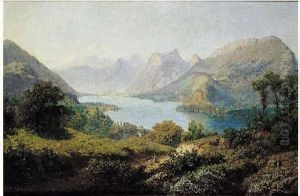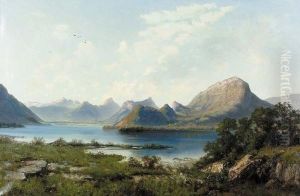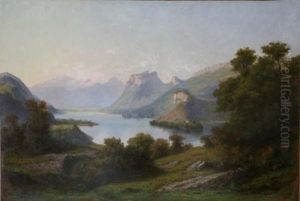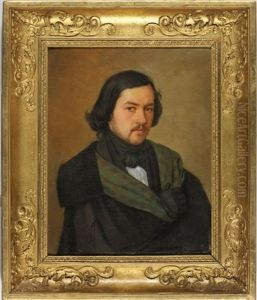Paul Cabaud Paintings
Paul Cabaud, born in 1817 in Annecy, France, was a 19th-century French painter and watercolorist known for his detailed portraits, landscapes, and genre scenes. Though not as widely recognized as some of his contemporaries, Cabaud's work offers a unique glimpse into the life and times of his era, showcasing the Romantic spirit that dominated much of European art during his lifetime. He exhibited a keen interest in capturing the nuances of light and atmosphere, traits that endeared his work to those who appreciated the subtleties of the natural world and human expression.
Cabaud's early life was marked by his passion for art, and he pursued his studies in Paris, where he was influenced by the burgeoning Romantic movement. The Romantic movement, with its emphasis on emotion and nature, played a significant role in shaping his artistic development. Throughout his career, Cabaud remained committed to his craft, constantly exploring new techniques and subjects. His landscapes, often imbued with a sense of tranquility and a deep appreciation for the beauty of the French countryside, reflect his profound connection to nature.
Despite his talent, Paul Cabaud remained relatively obscure in the broader art historical narrative, overshadowed by the giants of his time. However, his works were appreciated by his peers and were exhibited in various salons and exhibitions throughout France. After his death in 1902, Cabaud's contributions to French art began to be reassessed, and today he is recognized for his role in the development of 19th-century French painting. His works are housed in several French museums, where they continue to be studied and admired for their technical skill and emotional depth. Cabaud's legacy is that of an artist who, despite the limitations of his time, captured the essence of the world around him with sensitivity and precision.




